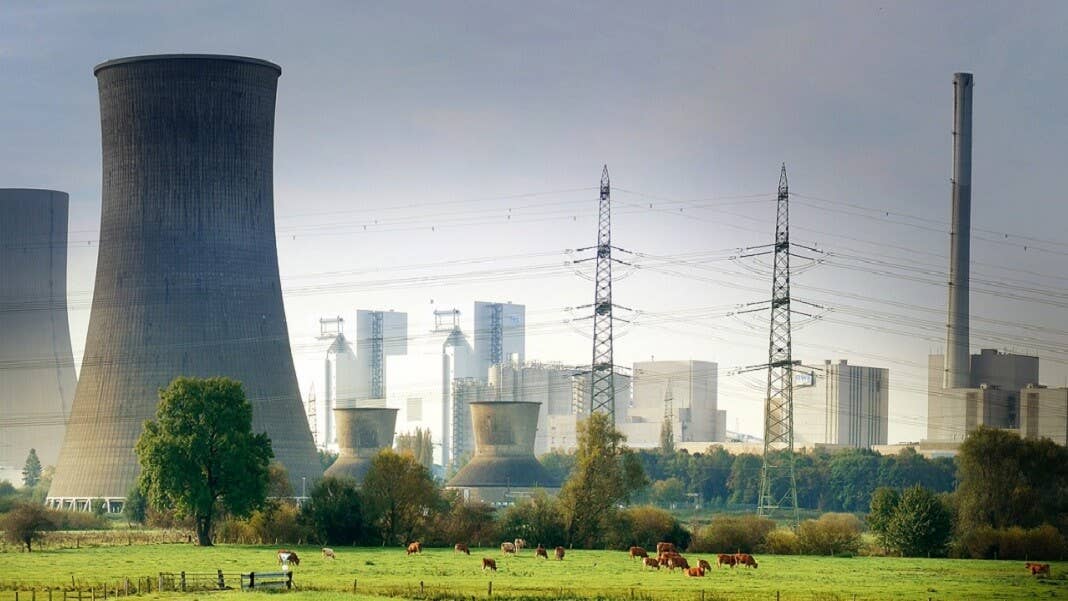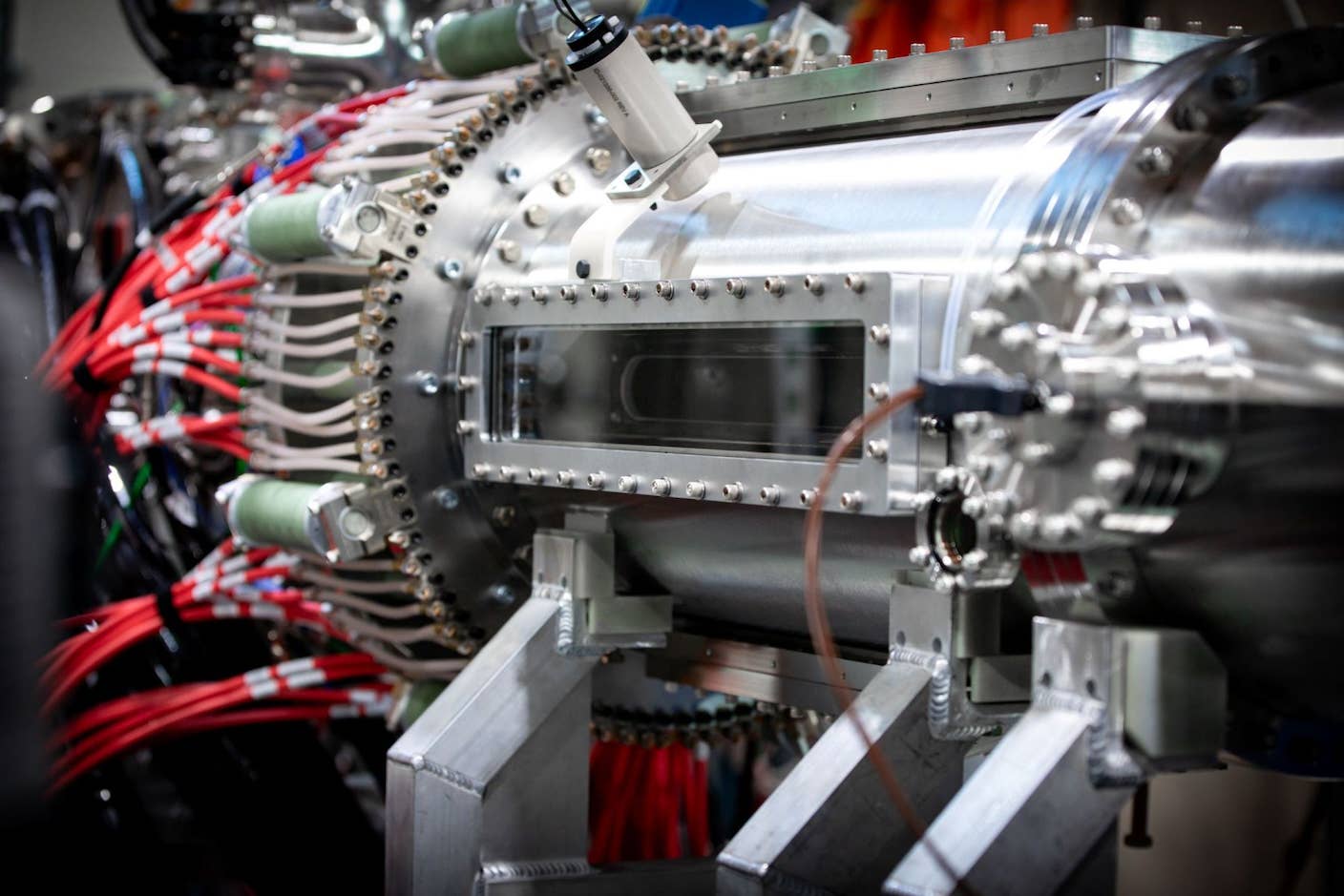This Startup Says Nuclear Power Could Be Our Most Effective Climate Solution

Share
From 1850 to 2019, human activity released 2.4 trillion tons of CO2 into the atmosphere. In 2022 alone, we released 37 billion more tons. While renewable energy is making a difference, it’s small: last year it offset a mere 230 million tons of emissions—less than one percent of the global total.
Energy demand is expected to triple by 2050. Amid calls for emissions reductions and net-zero targets, we need a reality check: how are we going to reverse climate change if energy is in everything we do, and energy itself contributes to the problem?
We need solutions that will help us pull trillions of tons of carbon from the air without adding more in the process—a tool far more powerful than solar panels or wind turbines. This tool already exists, and it’s nuclear power.
In a talk at South by Southwest this week, Bret Kugelmass, founder and CEO of Last Energy, explained how nuclear power has been misunderstood and devalued for decades, and the price we’ve paid as a result. “Infinitely abundant, carbon-free, always on, and incredibly energy-dense, nuclear energy could meet and exceed our energy needs,” he said.
Instead, this powerful technology has stagnated for decades, leaving us scrambling for other forms of energy that won’t keep pumping CO2 into the atmosphere. Kugelmass left a career in Silicon Valley with the sole purpose of finding a keystone technology to combat climate change. He visited 15 countries and all kinds of facilities to learn about nuclear power and compare it to other forms of energy. His conclusion was that if it’s done right, nuclear can enable continued growth—and a cleaner planet—in a way that no other power source can.
How Did We Get Here?
So why did a power source with so much potential stagnate? In 1963, then-President John F. Kennedy said nuclear power would account for half of all US energy production by end of that decade. His administration put together a perspective for rapid development of nuclear power production, and he had the Atomic Energy Commission conduct a study on the role civilian nuclear power could play in the US economy.
According to Kugelmass, the effort stalled not because of public perception or safety fears, but due to economic malfeasance. Rather than focusing on standardization, “We pursued ever-larger, ever more complex construction projects...from 1968 to 1970, we saw a 10-fold increase in the cost to build gigawatt-scale plants,” he said. Most of the cost of nuclear energy, he added, is in the interest accrued during the construction process. “It accounts for 60 percent of the delivered cost of energy,” he said.
The result, unsurprisingly, was that nuclear simply became too expensive to compete with other power sources. The US is now close to completing its first new nuclear project in decades—and at 10 years late and $20 billion over budget, it’s still not done.
If we had built out nuclear in a viable way starting in the 1960s, we’d live in a very different world today: less pollution, less panic about carbon emissions, more energy security, cheaper end prices for consumers. Is it too late to turn things around? “There is nothing broken with the nuclear technology we have today,” Kugelmass said. “What’s broken is the business model, and the delivery model. What nuclear needs to scale isn’t novel: productize, modularize, and mass-manufacture.”
Bringing Nuclear Back
Kugelmass founded a non-profit research organization called the Energy Impact Center (EIC), which in 2020 launched the OPEN100 project to provide open-source blueprints for the design, construction, and financing of a 100-megawatt nuclear reactor. EIC’s for-profit spinoff is Last Energy, which aims to connect private investors with opportunities to develop new nuclear projects around the world.
Rather than experimenting with newer technology, Last Energy’s sticking with tried-and-true pressurized water reactors (the kind used over the last several decades), but bringing their costs down by making the technology modular and standardized. They’re taking a play from the oil and gas industry, which can build entire power plants in a factory then deploy them to their final location.
Be Part of the Future
Sign up to receive top stories about groundbreaking technologies and visionary thinkers from SingularityHub.


“There’s a whole avenue of innovation related to constructability, rather than your underlying technology,” Kugelmass said. “If you deviate too much from the standard supply chain you’re going to see hidden costs everywhere.” He estimated, for example, that building a pump to move the salt for molten salt reactors, which use molten salt as a coolant instead of pressurized water, requires a billion dollars in research and development costs.
Building standardized small modular reactors, though, can be done for less than $1,000 per kilowatt. Making nuclear power affordable would mean it could be used for energy-intensive industrial applications that will become increasingly necessary in coming years, like water desalination and carbon removal.
Time for a Revival?
Energy underlies everything we do, and it’s essential for modern societies to grow and thrive. It enables human well-being, entrepreneurship, geopolitical independence, security, and opportunity. Given our current geopolitical situation and the unsustainable energy costs in Europe, could now be the time for a nuclear revival?
Kugelmass is hopeful. “Every 10 to 15 years the industry thinks it’s going to have a renaissance, but then it falls flat,” he said. “Now global macro issues have granted nuclear the opportunity to have another shot.”
In fact, Last Energy is looking to launch in Europe, where the need for affordable energy is dire. The company has signed deals in Romania, Poland, and the UK, and its first set of reactors is slated to come online in the next two years. Kugelmass noted that negotiating with utilities and governments in these countries is far more straightforward than in the US. “Maybe we’ll come to US someday, but we could be selling hundreds of gigawatts in Europe before that happens,” he said.
There may be hope for the US yet: in 2020 the Department of Energy launched its Advanced Reactor Demonstration Program, investing $230 million in research and development for small modular reactors.
Kugelmass is focused on making a solid product, no matter where it ends up being used. “We are an American company and we build the reactors here in Texas,” he said. “What previously took decades to build and cost billions is now a scalable product that can be pre-fabricated and deployed in under two years.”
Image Credit: Albrecht Fietz / Pixabay
Vanessa has been writing about science and technology for eight years and was senior editor at SingularityHub. She's interested in biotechnology and genetic engineering, the nitty-gritty of the renewable energy transition, the roles technology and science play in geopolitics and international development, and countless other topics.
Related Articles

Startup Zap Energy Just Set a Fusion Power Record With Its Latest Reactor

Scientists Say New Air Filter Transforms Any Building Into a Carbon-Capture Machine

Investors Have Poured Nearly $10 Billion Into Fusion Power. Will Their Bet Pay Off?
What we’re reading